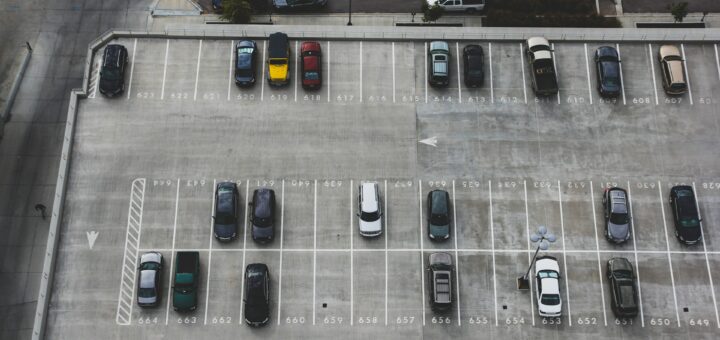6 Parking Areas Your Church Should Consider

We know that the sermon starts in the parking lot. In other words, the weekend worship experience begins as soon as your guest drives onto the perimeter of your property, not when they’re safely ensconced in an auditorium pew.
So it’s important to think through your parking plan. It’s necessary to examine how volunteers and signage and traffic flow and service times all work together to create a seamless parking experience.
No matter the size of your church, there are six parking zones you should consider:
1. First-Time Guests
This section should be as close to your main entrance or FTG Tent as possible, with the possible exception of handicapped / special needs parking (more on that in #2). Signage pointing to this area should start at the farthest reaches of your property. Spaces should be marked by individual signs or (ideally) marked by cones that a volunteer will move as a FTG arrives.
How many FTG spaces do you need? Watch your data. Experiment, rinse, repeat. We’ve found it to vary based on the day and time of the service, which is why we rely on parking cones and not fixed individual signage for individual spaces. If you have multiple services, remember that your departing and arriving FTGs may overlap, so you’ll need to plan for that.
2. Handicapped / special needs
We should show special care to those who need more care. This would include senior adult members, those with mobility issues or in wheelchairs, etc. Your local codes will dictate the number of ADA spaces your church should provide and where you provide them, but let that serve as a baseline. If you have a high number of older congregants, consider offering more spaces closer to the building.
At many of our campuses, we’ve found a way to let FTG and handicapped spaces happily coexist. We give priority to local codes and specific campus needs, but in many cases, we can put both parking areas equidistant from the main entrance.
3. Young families
Utilize an area of your lot closest to your kids ministry, and mark it off for minivans and family SUVs. Provide extra volunteers in this spot to engage with a kid or two while mom and dad are unloading the rest from the third row. Consider a fleet of wagons or strollers to make transport to the building easier. Better yet, provide a drop off zone where one parent can drop off the kids and the other parent, and then go park.
Some churches provide expectant mothers parking, which is a nice touch. Depending on the demographic of your church, you could have an entire section devoted to this. My initial reaction would be to add these spaces in the “young families” lot, but it doesn’t work if expectant mom is expecting her first child. On the other hand, it can help her get to know the kids staff, volunteers, and procedures prior to birth.
4. Staff and volunteers
In most cases, staff and volunteers should park the farthest from your building. It’s an act of humility and service to leave the closer and better spaces for others. Besides, most staff and volunteers are sticking around for multiple services, so there’s no need for them to hog prime real estate for hours.
There are two exceptions to this rule:
- If you have a Volunteer Headquarters that serves as your check in, it’s reasonable to put volunteers close to that area, if those parking spaces aren’t better utilized for #1-3 above.
- If you have that weird section of your parking lot – those spaces that are hard to get in and out of – it’s reasonable that staff and volunteers who arrive early and stay late could occupy those spaces, since they’ll have extra time and space to get in and out.
[Related post: A Walk to Remember]
5. Oversized vehicles
This is only effective if you have (a) incredibly clear signage or (b) a process known by attendees or (c) a dedicated parking team to lead drivers to this location. The “oversized vehicle” area is not so much a dedicated space, but multiple spaces within all spaces. In other words, your parking team needs to pre-identify where the duallys and gas guzzlers will go as they open each section. They need more of a turning radius, so a pull-forward space is ideal, as is spaces that are farther out without cars already parked on each side.
Note that an oversized vehicle section isn’t a reward or recognition for your congregant as much as it’s a parking hack for your volunteers. Getting the biggies into a spot quickly – and alleviating the 97 point turns that I always required back when we had a Suburban – will keep your parking process from jamming up.
6. General parking
This would of course encompass everyone that’s not covered in the other five groups above. The folks who park in this section are special and unique, just like everyone else.
Have you seen other special areas for parking at churches? Do you offer anything out of the ordinary at your church? Comment below!
